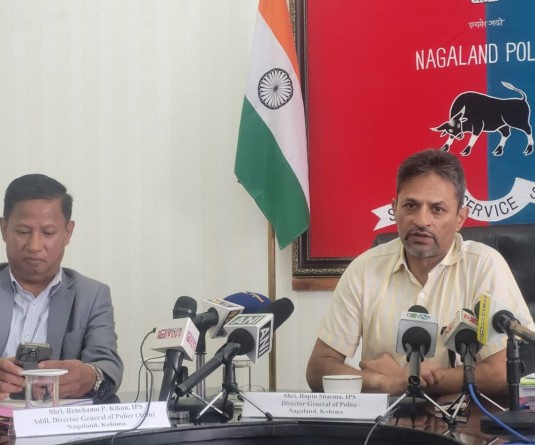
Newmai News Network
Kohima | June 21
The general feeling of remoteness felt by the people of Nagaland, both with mainland India as also within the state on account of the hilly topography, can be removed to a great extent by adopting e-Governance and IT applications. It is a fact that people living in the far-flung districts like Mon and Tuensang very often feel that they are isolated and cut off from Kohima, the state capital, and Dimapur, the commercial capital. This remoteness and distance can be bridged by use of technology. Having a strong IT infrastructure with good connectivity and an offer of public services through this platform can greatly improve governance and bring the government closer to people.
In order to make this a reality, concerted efforts by all would be required, especially the telecom companies, and mobile and broadband coverage in the state would also have to be improved. BSNL and other mobile companies would have to ensure that they reach the remotest of villages as also cover all the national highways and state highways, and all these services and applications would also require the power department to ensure that the services are actually not affected on account of lack of power supply.
It is maintained that e-Governance can go a long way in ensuring that all government departments take steps to improve their public service delivery systems to benefit citizens. Experts have realised that today, technology has the potential to make interactions between the governments and citizens a much more satisfying experience for the citizens and this can change the normal perceptions that people have about governments.
The governments of states which have adopted e-Governance and IT applications have observed that data collection and analysis from departments and field officers can become much more meaningful and lead to policy-formulation that is more relevant. Monitoring projects, fund utilisation and preventing leakages can be achieved by the use of e-Governance applications. Communication between various government offices and departments can be faster and more efficient. The adoption of e-Governance has led to savings in the tune of thousands of crores of rupees for states like Andhra Pradesh.
However, there are numerous challenges in implementing e-Governance projects in Nagaland. In states like Karnataka and Andhra Pradesh, the e-Governance boom has taken place through effective public-private partnerships which helped in leverage of technological flexibility and efficiency of the private sector in offering public services. This is achieved through very healthy competition between vendors who offer good technology at good cost. But in Nagaland and the North East, the private sector is hardly there and those which are providing hardware and other solutions are also unable to offer the same service-levels as done in other states.
It is common knowledge that even reputed companies fail to comply with their own standards of after-sales services in most of the north eastern states. For offering public services, there are hardly any competitive vendors as the lesser population density results in less number of transactions, in which most of the private players are not interested. This results in difficulties in getting right technological solutions on one hand and increased cost per transaction, on the other, making e-Governance projects economically unviable and difficult to implement. So, such issues will require more innovative planning and flexibility in approach for successful implementation of e-Governance projects in Nagaland.
It may be said that e-Governance has become the most versatile tool to improve service delivery to citizens and to improve governance. Policy-makers can embrace it and use it as an instrument to transform the system of governance to address the socio-economic challenges more effectively.
The Government of Nagaland has framed an IT policy in 2004, and in order to fulfil the objectives outlined by the IT policy, the state has also framed an e-Governance road map. As per the road map, its vision is “a vision of growth, sustainability and socio-economic welfare of citizens, armed with a comprehensive policy framework for instituting mechanisms for imparting fair justice and reinforcing the traditional system of local self governance in order to deliver faster, reliable and transparent mode of services by leveraging IT as a tool for empowering people distanced by remoteness and handicapped by poverty.”
The state’s strategy for e-Governance comprises establishing core IT infrastructure including State Wide Area Network (SWAN), State Data Center (SDC) and establishing Common Services Centers at 220 locations across the state for services delivery. The state government has identified agriculture, treasuries and accounts, commercial taxes, road transport and employment for the first phase of its mission projects. In addition, health, education, rural development, industries and commerce, veterinary and animal husbandry, tourism, personnel and administrative reforms and finance departments are also to implement the state mission projects.




